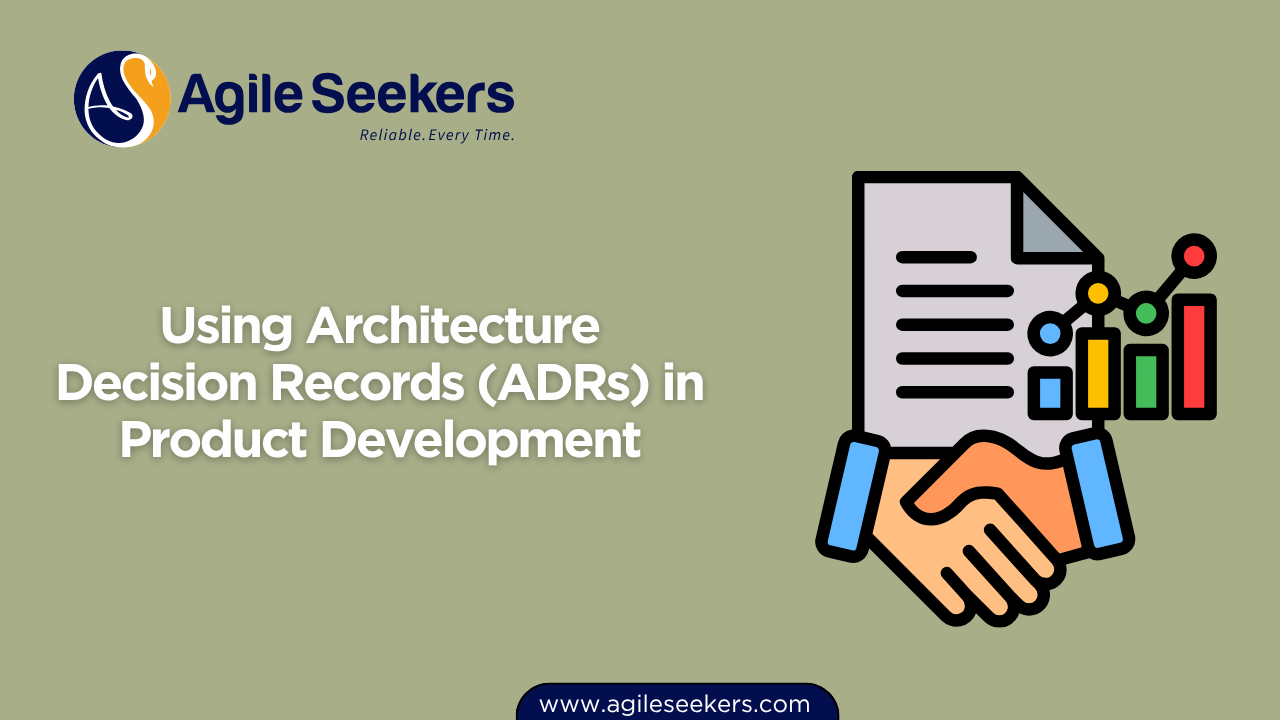Using Architecture Decision Records (ADRs) in Product Development

Product development teams often face architectural decisions that significantly influence future design, scalability, and maintainability. Architecture Decision Records (ADRs) provide a structured, traceable way to document these decisions, their rationale, and their impact. Integrating ADRs into the product development lifecycle brings clarity, accountability, and continuity—especially valuable for growing teams or distributed environments.
What is an Architecture Decision Record (ADR)?
An Architecture Decision Record is a short document that captures a single architectural decision, its context, and the reasoning behind it. Originally proposed by Michael Nygard, ADRs help teams avoid revisiting the same discussions, especially when original stakeholders have moved on. Each ADR answers the questions: What was decided? Why was it decided? What alternatives were considered? What are the consequences?
Why ADRs Matter in Product Development
Modern product development involves choices about APIs, frameworks, data storage, deployment patterns, security models, and more. Without proper documentation, teams risk inconsistency, technical debt, and onboarding friction. ADRs offer the following benefits:
- Decision transparency: Everyone knows why certain choices were made.
- Reduced rework: Avoids circular discussions on settled decisions.
- Better onboarding: New developers or product owners can catch up quickly on key decisions.
- Auditable rationale: Particularly valuable in regulated environments or during software audits.
When to Write an ADR
Not every technical detail needs an ADR. Reserve them for impactful decisions such as:
- Choosing between different architectural styles (e.g., microservices vs. monolith)
- Selecting a database or storage solution
- Deciding on CI/CD platforms
- Establishing performance or availability targets
- Choosing authentication/authorization mechanisms
These decisions shape the direction of the product and typically involve trade-offs, making them ideal candidates for ADRs.
Structuring an ADR
ADRs are simple markdown or text files stored in your codebase. A common format includes:
# ADR-001: Use PostgreSQL for Application Storage
## Status
Accepted
## Context
We need a reliable relational database to store user data, transactions, and logs. The alternatives considered were MySQL, MongoDB, and PostgreSQL.
## Decision
We will use PostgreSQL because:
- It supports ACID transactions well
- Strong community support
- Available on our existing cloud provider
## Consequences
- Some developers will need to upskill on PostgreSQL
- We may need to provision managed DB services
Versioning and Storage
ADRs should live alongside your source code in a version-controlled directory like /docs/adr. This ensures changes to ADRs are visible in pull requests and reviewed like any other code. Use semantic numbering like ADR-001, ADR-002, and keep a changelog or index.
How ADRs Support Agile and Product Thinking
Product teams that follow Agile principles benefit from ADRs in multiple ways. When building incremental value, each architectural step needs to align with business outcomes. SAFe Product Owner Certification training emphasizes the importance of outcome-driven decisions. Capturing these decisions in ADRs ensures business alignment across evolving backlogs.
Product Owners and Product Managers can use ADRs to validate whether architectural changes support customer value or reduce technical risk. This is especially important in SAFe environments, where architectural runway and enabler epics need to be visible and justifiable. Teams pursuing the SAFe POPM certification will find ADRs helpful when communicating trade-offs to stakeholders.
Integrating ADRs with Project Management Practices
From a project management perspective, ADRs introduce discipline and traceability. They're useful during planning, reviews, and retrospectives. Project Managers certified in PMP Certification often manage scope, risk, and stakeholder engagement—areas where ADRs are invaluable for communicating and validating assumptions with technical and non-technical stakeholders.
During stakeholder reviews, referencing specific ADRs helps justify decisions and mitigate scope creep. It also adds clarity when assessing change requests, especially if they contradict past technical decisions. This aligns well with principles taught in PMP training, such as integrating scope baselines with documented justifications.
Tooling and Best Practices
To maintain effective ADRs:
- Use a consistent format across the team.
- Keep ADRs short and focused—one decision per record.
- Review ADRs during architectural or sprint planning meetings.
- Link ADRs in pull requests and wiki pages where decisions are implemented.
- Consider tools like adr-tools to manage ADR lifecycles.
Common Pitfalls to Avoid
Despite their simplicity, ADRs can lose value if misused. Avoid these mistakes:
- Writing too many: Focus only on decisions with significant trade-offs or impact.
- Using vague language: Be specific about what’s being decided and why.
- Not revisiting old ADRs: Some decisions may become outdated. Mark them as "Superseded" or "Amended."
- Skipping context: Without background, a decision can appear arbitrary.
Real-World Example: ADRs in Action
Consider a team building a fintech product needing strong audit trails. During development, a decision was required: use a traditional RDBMS with change-data-capture or implement an event-sourced architecture. An ADR captured this evaluation, the selected path (event sourcing), and its long-term trade-offs (complexity vs audit fidelity). Later, when the team scaled and new engineers joined, that ADR helped avoid reverting back due to a lack of context. It also served as a discussion anchor when building automated reconciliation tools—a perfect example of how ADRs support long-term thinking.
Final Thoughts
ADRs provide a lightweight, low-friction way to embed architectural thinking into the DNA of product teams. They are especially useful for teams practicing Agile or SAFe frameworks and for those managing complex product roadmaps. Whether you’re a Product Owner, Project Manager, or Architect, making ADRs a habit can help your team scale decisions responsibly and maintain a shared understanding of why things are the way they are.
Professionals pursuing the SAFe Product Owner/Manager Certification or Project Management Professional certification will benefit greatly from incorporating ADRs into their toolkit.
Also read - Managing Acceptance Criteria for Complex System Integrations
Also see - Working with Engineers to Define System Boundaries and Interfaces




















